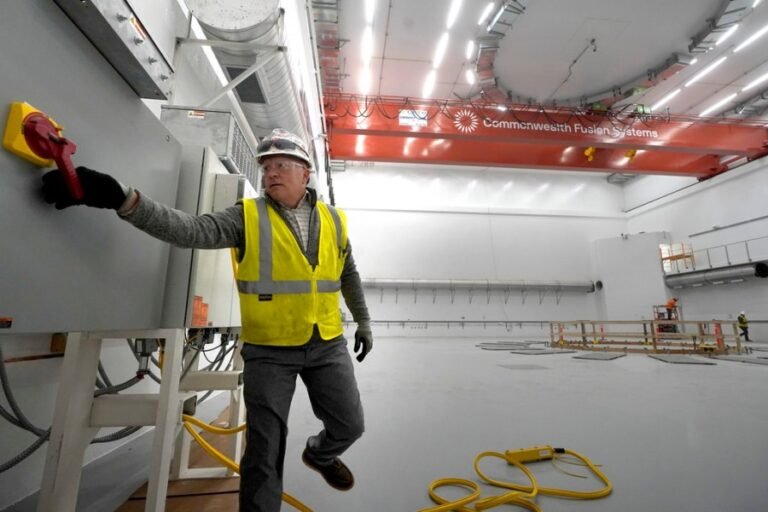
Communities hit by the deadly Independence Day floods face a desperate and confused recovery bereft of state and federal aid, survivors told a field hearing of the Texas Legislature in Kerrville on Thursday.
With no resources to drain Lake Ingram, it “has become a toxic pit,” resident Ann Carr told the legislators.
“We’ve talked to divers that have been out there. They have found vehicles. We have asked them direct questions, ‘Are there bodies in the water?’ Their answers are yes,” Carr said.
Now, the city of Kerrville is refusing to drain the lake, which bubbles with oil from submerged automobiles, Carr said. With $28 billion in the state rainy day fund, she added, “I think the state of Texas can help us clean our lake out.”
Others pointed to the consequences of the catastrophic flood damages, which hit a region where about 99 percent of residents didn’t have flood insurance.
With as much as $25 billion in uninsured losses, “many landowners are at high risk of losing their land,” said Terri Hall, a Kerrville resident who runs an anti-property tax group.
Hall said landowners lost outbuildings that neither insurance nor the Federal Emergency Management Agency will pay for, leaving them as easy pickings for private equity. The affected areas, she said, “have a high vulnerability to having big corporations like BlackRock swoop in and buy up our beautiful riverfront and turn Kerr County into something that we won’t recognize.”
State leaders mostly listened and murmured their support to survivors. But earlier in the hearing, they were unsparing in their criticism of local officials on the subject of training and warnings.
Lt. Gov. Dan Patrick (R) told County Judge Rob Kelly that he didn’t “know where you were on Day One, on July 4, but you should have been here. You should have been here directing that response. That is your responsibility.”
“Everyone was here that day working their ass off, and you were nowhere to be found,” Patrick added.
“The three guys in Kerr County who were responsible for sounding the alarm were effectively unavailable. Am I hearing that right?” Houston-area state Rep. Ann Johnson (D) demanded of local officials. “Is there a protocol that needs to be put in place? That, if the three folks who are responsible at this moment are not available for whatever reason, what should we do?”
When Kelly told legislators that it wouldn’t be hard to institute a better program of training, state Sen. Charles Perry (R) said that fact, while true, was “sad.”
“I don’t know how you can be good at what you do if you haven’t practiced what you’re supposed to,” Perry said.
In addition to the need for state and federal aid, residents and survivors coalesced around a few consistent themes, including a muddled and chaotic official disaster response, which survivors testified sometimes featured state resources showing up too late or not at all — or sometimes being sent away by locals.
“We had an entire pallet of chainsaws that were donated to disappear overnight,” one Austin-area volunteer told the panel. Another said that officials had stopped giving out aid to those whose houses had been swept away because a truck from beloved state grocery store HEB had showed up.
“Well, HEB, at that point, was giving out small little bags of groceries to people — just enough for an evening,” they said.
In Travis County, the state was almost entirely absent, said Timothy Mabry, who said he took trailers from the disaster site in Kerrville to Leander, just north of Austin, where local churches were running out of food, water and formula.
In that region, Mabry said, “It was not the state doing the cleanup. It was not the government helping. It was the citizens. It was Texans helping Texans who are doing the work, and they’re still doing the majority of the work. It was only after many cries and pleas for help and coordination with myself and many others of why resources in the state finally acknowledged what was going on there.”
“Nobody came,” Leander resident Aubrey Gallagher told the committee. “There were no resources.
Other testimony focused on evacuation routes and warnings — or the lack thereof. Survivors described being trapped in deadly bottlenecks as they raced to escape the floodwaters, with steep ravines and fenced-off private land on one side and a rising river on the other — a direct consequence of the short notice that disaster was coming.
“Our home was 35 to 40 feet above the normal river water level, and by 3 a.m., the water was already at the house — and we had no warning,” one woman told the committee.
She and her family raced to their cars and out onto Highway 39, but “there was nowhere to get out, and the water was rising too quickly to make it to higher ground, so we climbed onto our cars and into the trees.”
Perched there, she said, they watched “other cars shoot down the river and massive trees, and prayed and planned for what we would do if our trees fell down.”
They were lucky, she said — other friends and neighbors drowned that night.
Many residents missed cell warnings, which went out late, because they didn’t have cell service. Others who did found they didn’t matter.
Alicia Baker, whose parents and 11-year-old daughter died in the floods, was in a cabin on stilts when the floodwaters hit. They had signal, but “the alert said seek higher ground. We’re on stilts. Where were we supposed to go?”
Pulling at the shoulders of her blouse as she fought back tears, Baker urged the installation of smart flood meters — something the county had voted against in the past.
“We should actually have sensors in our water that would then alert sirens to go off,” she said. “If I got an alert that said 6 to 7 inches, I’ve been like, cool, that’s the dock. It wouldn’t have made that much of a difference. Now, when you’re talking 30 feet, that’s a whole other story.”
There was a bigger elephant in the room, one Kerr County man argued: that Texas development codes haven’t kept up with the rise in extreme weather, and permit construction in the path of floods.
“Who is going to talk honestly about land use? I’m not asking necessarily for zoning mandates, but people should be informed when they build in flood areas.”


